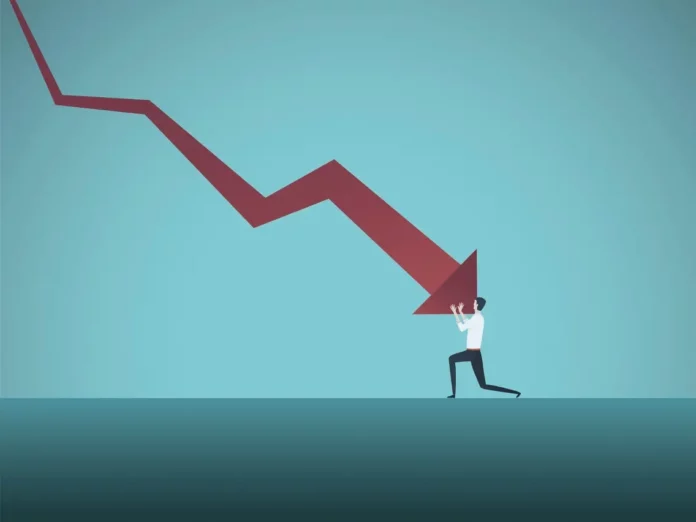It’s hard to remain cheery as economic conditions go soft, stocks bounce around with whiplash-inducing volatility and inflation remains stickier than superglue.
But there’s hope for markets yet — some economists say that these rough waters create new opportunities (along with some risks) for investors.
What’s happening: The global economy is in a state of flux. The labor market remains strikingly resilient, but other economic indicators, like spending and manufacturing, are softening. And chaos in Russia has the potential to deliver another inflation spike if its vast commodity exports are disrupted.
Earlier this spring, central banks appeared to be pausing or winding down their year-plus regimen of painful, inflation-fighting rate hikes. But policymakers have recently changed their tunes and are warning investors that more pain is coming.
US stocks, meanwhile, have managed to pull up from their recent bear market into bull territory. But analysts still aren’t sure that this isn’t a bear in bull’s clothing, and markets ended last week significantly lower, breaking a multi-week winning spree.
Still, there’s good reason for investors to be optimistic, says Indrani De, head of global investment research at FTSE Russell. Macroeconomic signs are pointing to a renewed appetite for risk.
Before the Bell spoke with De, who outlined why she’s positive on markets.
This interview has been edited for clarity and length.
Before the Bell: How are you thinking about inflation and bond yields?
Indrani De: Inflation is still high but it’s the path that is important, and that path is clearly heading towards disinflation. Different countries around the world are at different points in their inflation journeys, which means we’re at a point where there is a lot of dispersion between asset classes and between different countries. That increases the need for selectivity on the part of investors.
The second thing I want to highlight is that resilient economic growth in the US has led to higher earnings forecasts. Stocks have done particularly well since the US dollar fell from its recent highs in the last quarter of 2022. A weak dollar is really good for risky assets. It’s really good for large cap stocks.
The market tends to focus on short-term policy rates. But what really matters most for equities and other risk assets is the longer, 10-year Treasury yield. That rate peaked in the early part of 2022 and has since come down a bit and stabilized. That stabilization has really brought back tech stock growth.
What about artificial intelligence? Is that causing froth in the markets?
It’s not just cyclical factors like GDP holding up better than expected and corporate earnings revisions moving up. There is also a genuine hope that because of AI, we could be in the midst of a structural upgrade to economic growth prospects. This could be like the 1990s when internet stocks led to growth in the tech sector but then had ramifications for the entire economy.
In the 1990s, we used to say ‘internet companies’ because there were some firms that benefited from the boom. Gradually we dropped the ‘companies’ and started saying ‘internet’ because every company, every sector and every person felt its improvements across the economy. AI will begin narrowly, with some companies benefiting, but I expect that this whole concept of AI will become something that everybody can access. Everybody can utilize it to make improvements in their economies. So that’s where the broadening out comes, but we’re just in the early stages now.
There is a sense that AI could give us that next leg up in productivity, and productivity leads to economic growth.
Still, if the rally does not widen out beyond AI and this euphoria remains concentrated only in technology, then that is far more risky because ultimately, how large can any one industry grow in the overall stock market?
Are you at all worried about markets going forward?
I don’t want to underplay the risks to stocks that remain. Valuations may have outrun their growth improvement prospects. There are certainly other risks in the economy: The manufacturing [purchasing managers’ index] is slowing, there’s extreme tightening in bank lending standards. It is a mixed picture on the macro front, but there are signs of optimism which is why we’re seeing US equity markets rise higher.
The third quarter
Time flies: The third quarter, and the second half, of 2023 begins in earnest next week.
Before the Bell has written quite a bit about what economists are forecasting in the macroeconomic environment (see above), but it’s more difficult to predict exactly how markets will perform.
Still, that doesn’t stop analysts, and even companies themselves, from taking a stab at prognosticating.
Overall, there are 10,981 analyst ratings on stocks in the S&P 500 for the third quarter, according to FactSet data. Of these ratings, 54.8% are Buy ratings, 39.6% are Hold ratings, and 5.6% are Sell ratings.
Broken down by sector, analysts are most optimistic on the Energy, Communications Services, and Information Technology sectors. That makes sense, since tech and energy stocks have largely been driving markets upward over the last few weeks. Tech has benefited greatly from the AI boom and although energy prices have fallen in recent months, geopolitical chaos has been a boon to oil and gas companies.
Analysts are most pessimistic on the Consumer Staples sector. Retail sales have dropped recently as the purchasing power of US consumers falls from its pandemic-era levels and the economy softens.
FDIC accidentally reveals details about Silicon Valley Bank’s biggest customers
Whoops.
The FDIC mistakenly revealed to Bloomberg News details on the biggest customers at Silicon Valley Bank, the failed bank whose depositors were rescued through emergency action by regulators, reports my colleague Matt Egan.
An FDIC document posted online by Bloomberg News on Friday offers new insights into who benefited from that controversial rescue in March when SVB became the second biggest bank failure in US history. According to Bloomberg, that document was accidentally released unredacted by the FDIC in response to a Freedom of Information Act request.
After SVB suddenly collapsed, the FDIC and other federal regulators decided to make all of the bank’s customers whole, including those with more funds than the $250,000 insurance limit.
That emergency move saved not only fledgling tech startups — some of which could have been wiped out by the SVB implosion — but some heavy hitters in the tech industry, too.
For instance, leading venture capital firm Sequoia Capital held just more than $1 billion at SVB, according to the FDIC document. Sequoia, famous for its prescient investments in PayPal, Google, Apple and other tech firms, was SVB’s fourth-biggest depositor, according to the document.
Another major SVB customer was Kanzhun, a Beijing tech firm that runs BOSS Zhipin, China’s largest online recruitment platform. The FDIC document indicates the Chinese firm held about $903 million at SVB.
SVB’s biggest depositor was Circle Internet Financial, the stablecoin firm behind USD Coin. The FDIC document shows that Circle held $3.3 billion at SVB, a figure that the stablecoin company previously disclosed.
The streaming platform Roku held $420 million at SVB, according to the FDIC document. Hours after SVB failed, Roku warned investors it held about $487 million — roughly a quarter of its total cash — with the bank and did not know if it would be able to recover the funds.
The FDIC estimates the SVB failure will cost its deposit insurance fund $16.1 billion. The agency plans to recoup those losses by assessing fees on banks.






















